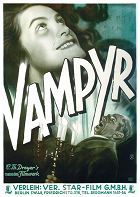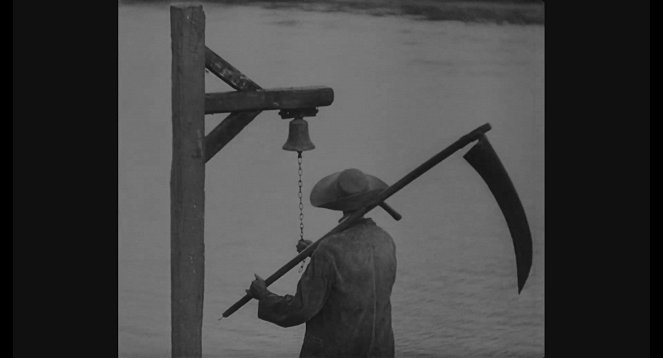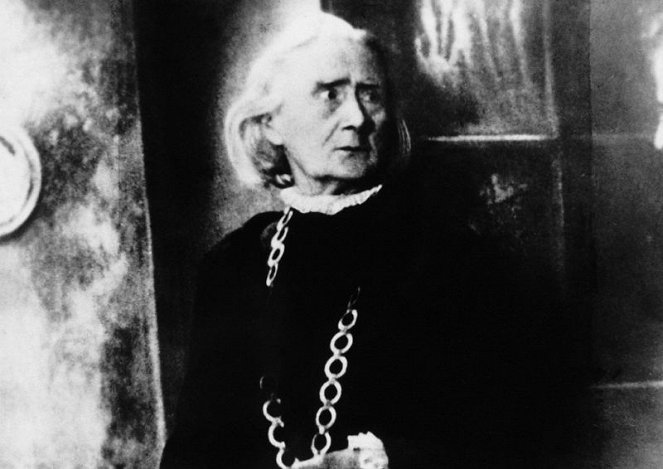Regie:
Carl Theodor DreyerMusik:
Wolfgang ZellerInhalte(1)
Die Antwort des Dänen Carl Theodor Dreyer auf Dracula ist Vampyr. Der Regisseur präsentiert eine klassische Vampyr-Geschichte voller Ellipsen. (Verleiher-Text)
Videos (1)
Kritiken (3)
Einer der seltsamsten Filme, die ich je gesehen habe. Grey ist nicht nur ein Name, sondern auch die Farbe, die den Film charakterisiert - die Geschichte ist in der Tat in Grau gehalten, was den expressionistischen Formen ihre Schärfe nimmt und eine Art träumerischen Schleier erzeugt. Und das ist der Traum, dem diese einfache Geschichte über einen Vampir am meisten ähnelt. Ich hatte den Eindruck, dass der Film nicht mit einem echten Vampir, sondern mit dem Motiv "Film als Vampir" arbeitet, Film als ein Medium, das das "Blut" der Realität aussaugt, das den Zuschauer in einer alternativen Realität gefangen halten kann. Einige der Aufnahmen sind unvergesslich, ebenso wie die Atmosphäre, die diesen Film begleitet. Es ist kein Horror, es ist keine Spannung, es ist... etwas, das dem Grau nahe kommt, aber nicht langweilig. Vielmehr - Verträumtheit, die Magie der subjektiven Sicht. Am Ende war ich verdammt froh, als diese suggestiv Tagträumerei zu Ende war. Ein Film an der Schwelle zwischen Stumm- und Tonfilm und gleichzeitig eine verdammt geisterhafte Offenbarung. Wenn sich Ihnen die Gelegenheit bietet, Allan Grey zu treffen, sollten Sie sie nicht ausschlagen.
()
Dreyer’s admitted intention was to shoot a film the likes of which had never been made before. I would say that he succeeded. It would be too easy and not very accurate to describe The Vampire as a horror movie. I prefer the more vague classification “unsettling film”. It is unsettling in a way similar to how the films of Luis Buñuel and David Lynch are unsettling, as they are only tenuously anchored in reality. With repeated viewing, the initial astonishment turns into admiration for the formalistic sophistication with which the unnerving effect is achieved (and which may have been the reason that Alfred Hitchcock liked the film). The shots do not logically follow each other, the cuts are subordinate to the atmosphere rather than to the logic of the narrative, the asymmetrical shot compositions and confusing, avant-garde creative directions inspired by the structure of the space force us to constantly reassess where we are and whether this is reality, fantasy or a bad dream. The difficulty of differentiating objective and subjective shots is connected with the blurred lines between the real and the fantastical. One of the techniques that Dreyer used to violate standard narrative conventions and circumvent expectations is the independence of the camera. For example, in one scene the camera creates the impression that it is moving in accordance with the protagonist’s gaze, but it soon turns out that the protagonist is at the opposite end of the room with his back turned to the camera. This logically raises the disturbing question of who is standing behind the camera at that moment and who is watching. The intense feeling of unease that the film evokes is also due to the fact that it was shot in real conditions and the sounds were recorded afterwards, which forced Dreyer to evoke the terrifying mood primarily by visual means. Thanks to that, The Vampire has aged much more slowly than the first horror movies with full sound. In fact, it seems not to have aged at all. 90%
()
It's very debatable to say definitively whether or not this early sound horror film is getting older as the years go by. Some of the narrative techniques are very original even today, and formally it’s constructed cleverly enough to cover up the lack of a thrilling plot. The play of shadows has perhaps never been so impressive in cinema, and Dreyer further triumphs with bleak, one might say dreamlike visuals, a great cast, and some atypical camera angles (for example, the journey in the coffin from the perspective of the deceased). Unfortunately, narratively, although it tries to weave several storylines or reality with mere dreams, the film is constructed in a boring way and brings almost no iconic genre moments that would be remembered by a viewer untouched by film science (like me) or without an understanding of storytelling that fundamentally uses images and associated symbols – at least I have that understanding, so I seriously considered a fourth star. 70%
()



Werbung